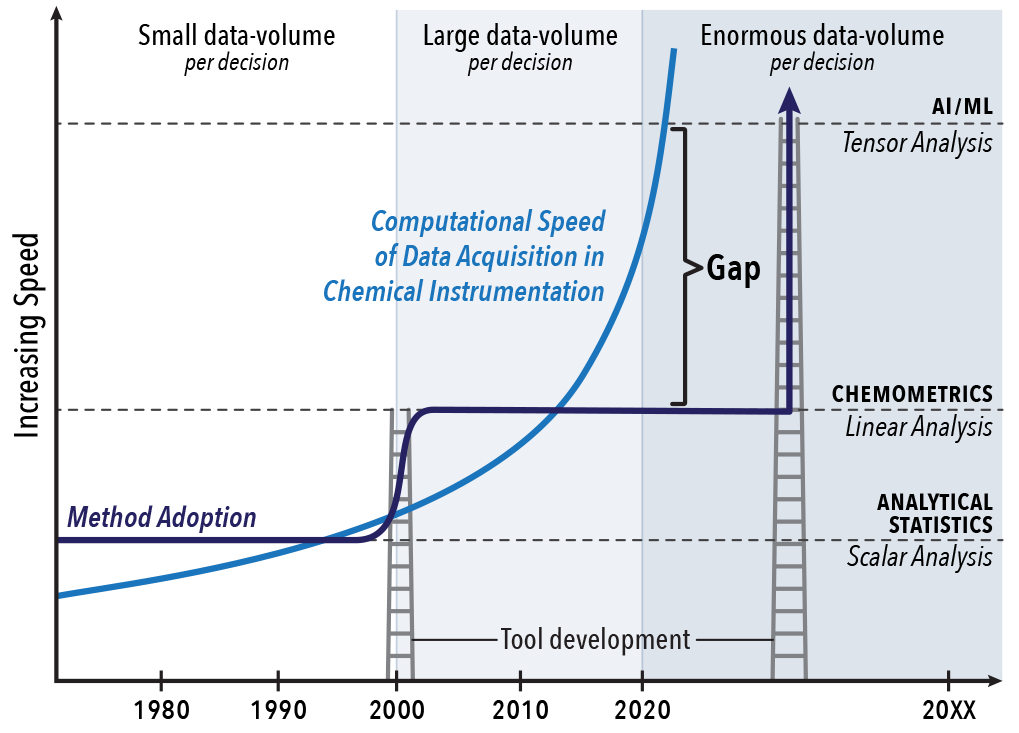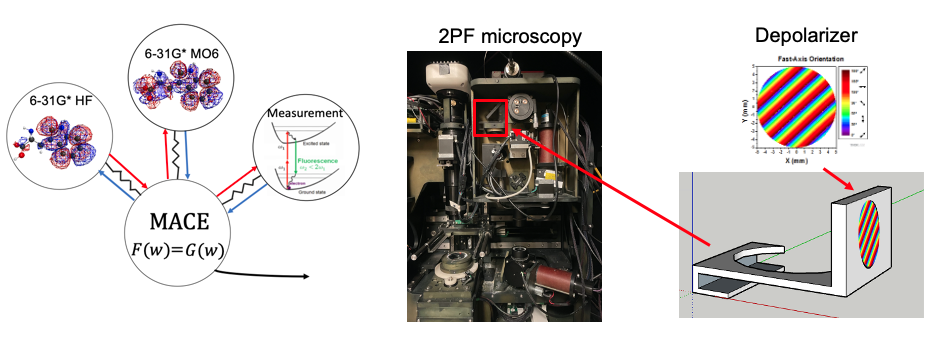Research
Nonlinear Optical Analysis of Molecular Composition and Dynamics within Heterogeneous Assemblies
Heterogeneity within molecular assemblies often defines function. In heterogeneous assemblies, full understanding of function requires the use of spatially resolved analysis techniques and methods. However, ensemble-averaged measurements of materials exhibiting heterogeneity can often mask critical information on these arrangements.
Measurement tools capable of informing on structure, composition, and dynamics at high spatial resolution are critical for informing decision-making in a variety of scientific research enterprises.
The Simpson Lab focuses on developing measurement approaches for mapping composition and dynamics in heterogeneous biologically active materials:
- Mid-infrared spectral imaging with fluorescence photothermal detection to inform on chemical composition with high sensitivity and sub-micron spatial resolution
- Chiral-specific spectroscopies for interpreting molecular order and orientation in microstructured assemblies
- Diffusion mapping with patterned photobleaching and Fourier analysis for mapping of molecular diffusivity
Localizing chemical characterization to locations only a few µm in diameter can greatly increase the signal to noise and recover information on the spatial correlations between composition in samples ranging from tissue sections to pharmaceutical formulations. Nonlinear optical methods using ultrafast laser sources can provide selective image contrast based on symmetry, complemented by spectroscopic/diffraction analyses at highly localized regions of interest. Pairing linear and nonlinear optical imaging modalities enables high confidence in chemical classification with high speed and high spatial resolution.

Integrated Imaging
The Moore's Law increase in information content accessible from ever-increasing processing speeds enables the rapid acquisition of enormous volumes of chemical imaging data. Coupling this tsunami of information with data mining and machine learning algorithms into the data acquisition pipeline opens opportunities lost in more conventional acquire-first, analyze-later strategies. This integrated imaging in which advanced algorithms are embedded into the design and implementation of the hardware have greatly enhanced the frame rates achievable in beam-scanning imaging, have enabled merging of information from multiple disparate platforms, and greatly increased the number of accessible wavelength channels in hyperspectral image acquisition.

The Simpson Lab has developed computational tools to support integrated imaging:
- MACE (multi-agents consensus equilibrium) aims to fuse multiple descriptions for one consensus result at equilibrium to bridge computations with measurements.
- GALDA (general adversarial approach) aims to improve spectrum classification accuracy compared to linear analysis methods.
